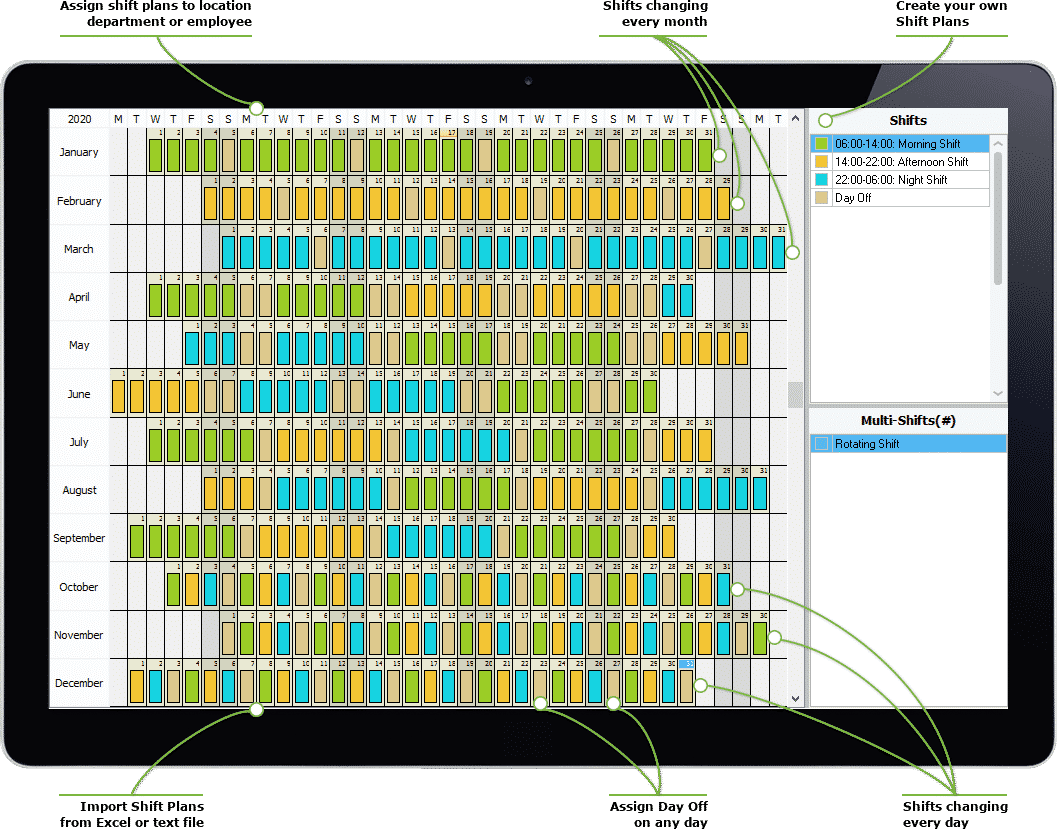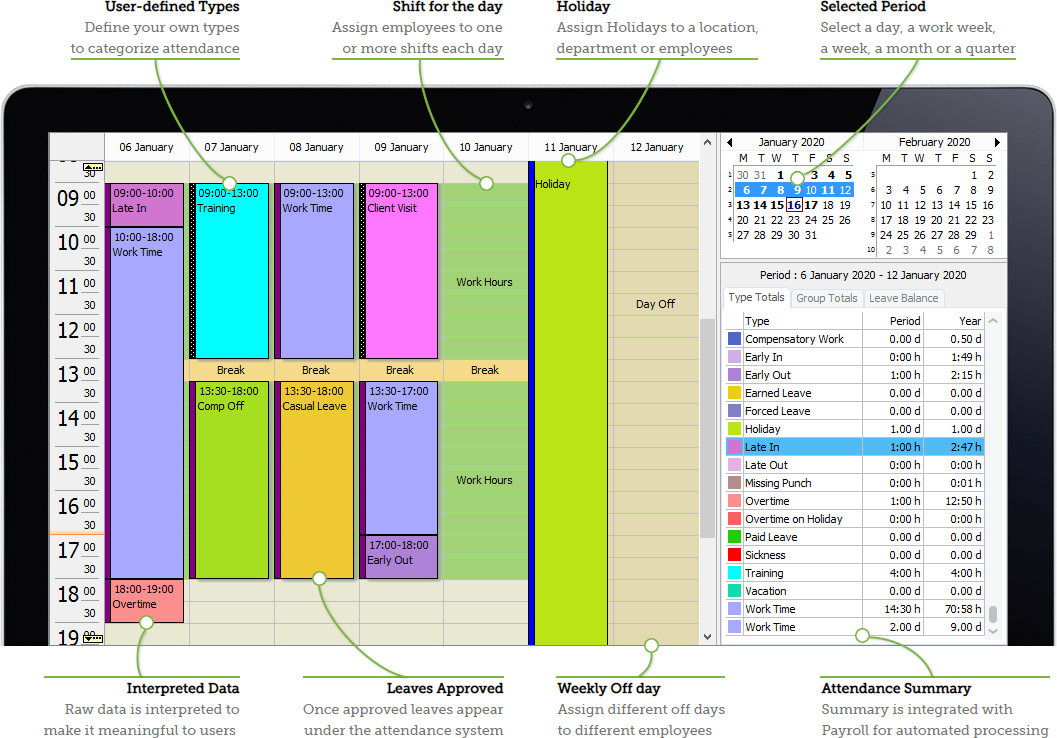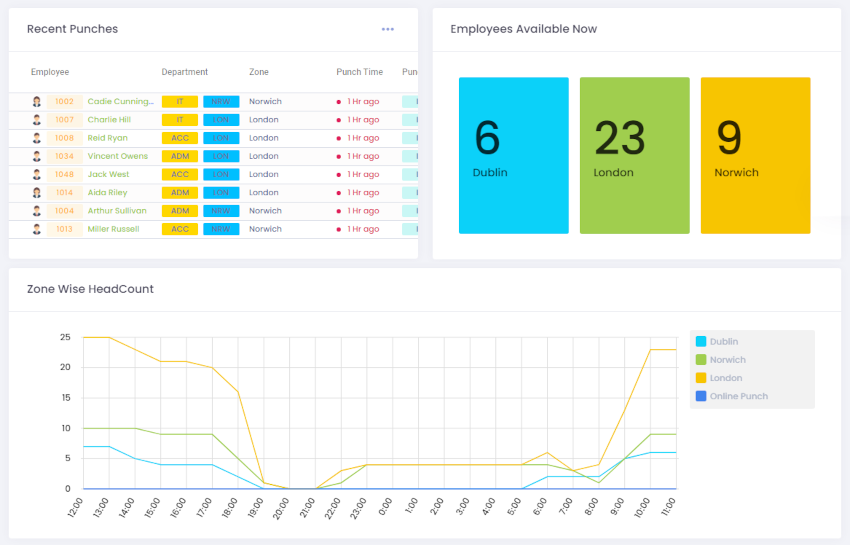
Efficient workforce scheduling is vital for businesses across various industries to maintain productivity, meet customer demands, and manage labor costs effectively. Traditional methods of scheduling, relying on manual processes or basic software, often lead to inefficiencies, scheduling conflicts, and decreased employee satisfaction. However, with the advancement of technology, modern shift management tools integrated into Human Resource Management Systems (HRMS) offer sophisticated solutions to optimize workforce scheduling and improve operational efficiency.
Challenges in Traditional Workforce Scheduling
1. Manual Processes and Spreadsheets:
Many businesses still rely on manual scheduling processes using spreadsheets or paper-based systems. These methods are time-consuming, error-prone, and lack the flexibility needed to adapt to changing business requirements.
2. Complexity of Shift Rotations:
Managing shift rotations, especially in industries with 24/7 operations or rotating schedules, can be challenging. Coordinating employee availability, skill levels, and compliance with labor regulations adds complexity to the scheduling process.
3. Employee Preferences and Work-Life Balance:
Accommodating employee preferences, such as preferred shift timings or days off, while ensuring adequate coverage can be difficult. Balancing business needs with employee work-life balance requirements is essential for employee satisfaction and retention.
4. Adherence to Labor Laws and Regulations:
Compliance with labor laws and regulations, including maximum working hours, rest periods, and overtime rules, is crucial for avoiding legal issues and maintaining employee well-being. Manual scheduling processes make it difficult to track and enforce these regulations accurately.
Benefits of Advanced Shift Management Tools
1. Automated Scheduling Algorithms:
Advanced shift management tools leverage automation and algorithms to create optimized schedules based on factors such as employee availability, skill sets, workload requirements, and business constraints. Automated scheduling reduces the time and effort required for scheduling tasks and minimizes scheduling conflicts.

2. Employee Self-Service Portals:
Modern HRMS solutions offer self-service portals where employees can view their schedules, request time off, swap shifts with colleagues, and communicate their availability preferences. Empowering employees with self-service capabilities improves engagement, reduces administrative workload, and enhances employee satisfaction.
3. Real-Time Visibility and Updates:
Advanced shift management tools provide real-time visibility into scheduling data, allowing managers to monitor coverage, track employee hours, and make adjustments as needed. Real-time updates and notifications keep employees informed about schedule changes, reducing confusion and missed shifts.
4. Compliance Monitoring and Alerts:
Integrated compliance features within shift management tools help organizations monitor adherence to labor laws and regulations automatically. Alerts and notifications notify managers of potential compliance issues, such as scheduling employees for overtime without proper authorization, enabling proactive resolution.
5. Data Analytics and Forecasting:
Advanced shift management tools often include data analytics and forecasting capabilities, allowing organizations to analyze historical scheduling data, identify trends, and forecast future workforce needs. Data-driven insights enable informed decision-making and strategic workforce planning.

Key Features of Advanced Shift Management Tools
1. Shift Optimization Algorithms:
Advanced scheduling algorithms consider various factors, such as employee availability, skill levels, workload requirements, and labor regulations, to generate optimized schedules.
2. Schedule Templates and Patterns:
Tools offer predefined schedule templates and patterns for recurring shifts, simplifying the scheduling process and ensuring consistency across schedules.
3. Shift Swapping and Approval Workflows:
Employees can request shift swaps or time off directly through the system, which then undergoes an approval workflow. This streamlines the process of managing schedule changes and ensures transparency and accountability.
4. Mobile Accessibility:
Many advanced shift management tools offer mobile applications, allowing managers and employees to access schedules, make requests, and communicate on-the-go, enhancing flexibility and accessibility.
Implementation Considerations
1. Needs Assessment:
Conduct a thorough assessment of organizational needs, current scheduling processes, and pain points to determine the specific requirements for advanced shift management tools.
2. Vendor Selection:
Choose a reputable vendor with a proven track record in providing advanced shift management solutions. Consider factors such as functionality, scalability, integration capabilities, and customer support.
3. Training and Onboarding:
Provide comprehensive training to managers and employees on how to use the advanced shift management tools effectively. Clear communication and ongoing support are essential for successful adoption and utilization.
4. Feedback and Optimization:
Gather feedback from users post-implementation to identify areas for improvement and optimization. Continuously monitor the performance of the tools and make adjustments as needed to ensure maximum efficiency and user satisfaction.
Lenvica HRMS includes a Shift Management Module that helps you manage employee shifts, no matter how complicated they are!
Advanced shift management tools integrated into HRMS solutions offer powerful capabilities to optimize workforce scheduling, improve operational efficiency, and enhance employee satisfaction. By leveraging automation, real-time visibility, compliance monitoring, and data analytics, organizations can create optimized schedules that meet business needs while accommodating employee preferences and maintaining compliance with labor regulations. Implementing advanced shift management tools is a strategic investment that enables organizations to streamline scheduling processes, reduce administrative workload, and drive productivity and performance across the workforce.

Leave A Comment
You must be logged in to post a comment.